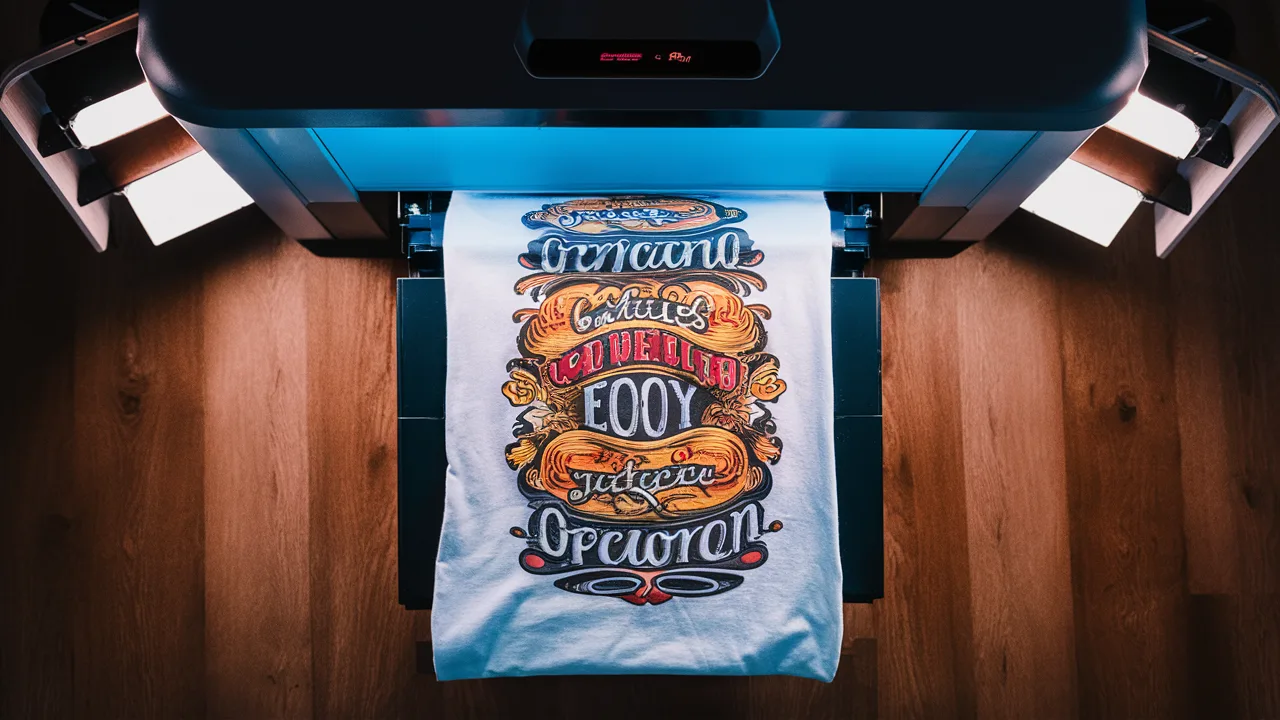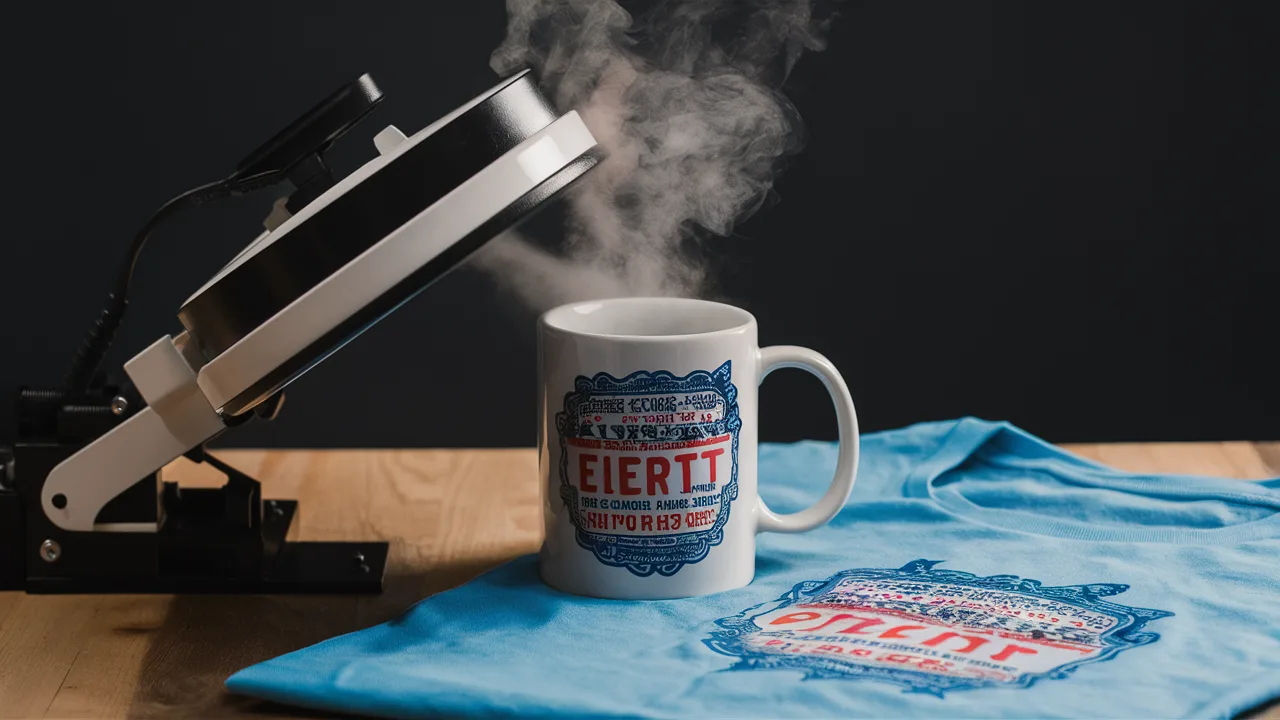What is sublimation printing and how can it transform your custom product business?
Sublimation printing is a revolutionary decorating technique that allows you to create vivid, professional-quality designs that become part of the product itself—making it the go-to choice for entrepreneurs, crafters, and custom product creators worldwide. But what makes sublimation printing so special, and how can you harness its power for your business?
TL;DR: Everything You Need to Master Sublimation Printing
- Sublimation printing uses heat to permanently transfer dye into polyester or polymer-coated surfaces.
- It delivers vibrant, permanent results that won’t peel or crack—perfect for apparel, mugs, tumblers, and more.
- You’ll need a quality sublimation printer, premium sublimation ink, specialized sublimation paper, and a reliable heat press.
- Choosing the right printer and high-quality supplies is crucial for preventing color fading and ghosting issues.
- This comprehensive guide covers everything from setup and supply selection to advanced troubleshooting techniques.
Understanding Sublimation Printing: The Science Behind Perfect Prints
1.1 How Does Sublimation Printing Work?

Sublimation printing is a fascinating process that transforms solid dye directly into gas without passing through a liquid phase—a scientific phenomenon called sublimation. When you apply heat and pressure, the sublimation ink embeds itself permanently into the surface layer of polyester or polymer-coated products.
Think of it as creating a permanent tattoo for objects—the design doesn’t sit on top like vinyl, it becomes an integral part of the item. This makes sublimation printing ideal for creating vibrant, long-lasting graphics on performance apparel, ceramic mugs, metal panels, and countless other products.
1.2 Why Choose Sublimation Printing for Your Business?
Here’s why successful creators and entrepreneurs swear by sublimation printing:
- Unmatched color vibrancy: Produces photo-quality prints with incredibly rich, saturated colors.
- Superior durability: Designs won’t crack, peel, or fade even after hundreds of washes.
- Seamless finish: The sublimation ink is infused into the material, leaving surfaces perfectly smooth.
- Perfect for customization: Ideal for personalized items and small-batch production.
Important note: Sublimation printing works best on light-colored, polyester-rich materials. If you’re working with cotton or dark fabrics, you’ll need alternative printing methods.
Choosing the Perfect Sublimation Printer for Your Needs
2.1 Essential Factors When Selecting Your Sublimation Printer
Not all printers can handle sublimation printing effectively. Here’s what you should prioritize when choosing your sublimation printer:
- Print size capacity: Consider whether you need A4, A3, or wide-format capabilities for your projects.
- Sublimation ink compatibility: Ensure the printer accepts refillable sublimation ink cartridges without voiding warranties.
- Setup complexity: Some printers come sublimation-ready, while others require conversion—choose based on your technical comfort level.
- Print quality standards: Look for exceptional precision, color accuracy, and consistent output quality.
Pro tip: Beginners should prioritize user-friendly sublimation printer models with excellent customer support and active community forums for guidance.
2.2 Top Sublimation Printer Categories to Consider
When researching sublimation printer options, focus on brands with established reputations for reliability, consistent sublimation ink supply chains, and exceptional color accuracy. Many trusted manufacturers now offer dedicated sublimation printer lines specifically designed for this application, eliminating the guesswork and risks associated with DIY printer conversions.
Essential Sublimation Printing Supplies: Your Complete Shopping Guide
3.1 Sublimation Ink: The Heart of Quality Prints
Sublimation ink is specially formulated dye-based ink designed to transition seamlessly from solid to gas under heat application. The quality of your sublimation ink directly impacts your final results—inferior formulations can sabotage your designs with inaccurate colors, clogged print heads, and disappointing transfers.
You’ll encounter two main sublimation ink types: high-release formulations and gel-based varieties. High-release sublimation ink delivers maximum vibrancy and color saturation, while gel-based options offer thickness and can be more economical for high-volume production runs.
Expert tip: Always match your sublimation ink brand with compatible printer models for optimal results, and gently shake new cartridges before installation to ensure proper color dispersion.
3.2 Sublimation Paper: Your Transfer Medium
Quality sublimation paper features specialized coatings that hold and release dye effectively during the heat transfer process. Your choice of sublimation paper directly impacts the sharpness, vibrancy, and overall quality of your finished products.
- Heavy-weight sublimation paper: Perfect for mugs, metal substrates, and curved surfaces.
- Fast-dry sublimation paper: Excellent for high-speed production environments and quick turnaround projects.
Storage tip: Keep your sublimation paper in a cool, dry environment and store it flat to prevent wrinkles or color fading caused by moisture absorption.
Step-by-Step Sublimation Printing Process
4.1 Design Preparation for Sublimation Success
Once you’ve selected your artwork or created your design, optimize it using professional graphic software that supports RGB color mode—essential for sublimation printing (programs like Photoshop or Illustrator work perfectly). Always mirror your design before printing, especially when including text, so it reads correctly after the transfer process.
Size your design layout to match your blank’s exact dimensions, keeping in mind that sublimation printing only works effectively on polyester-rich surfaces. For curved items like mugs, use digital mockups to visualize how your graphics will wrap around cylindrical shapes.
4.2 Printing and Heat Transfer Process

With your file properly prepared and mirrored, load your sublimation paper correctly into your sublimation printer and send your design. Make sure to select the appropriate media setting for sublimation paper in your printer’s menu system.
Now for the heat transfer magic:
- Preheat your heat press to the recommended temperature (typically 400°F/204°C for most materials).
- Position the blank item on the press with your printed design face-down against the surface.
- Apply consistent pressure for 40–60 seconds depending on the specific substrate requirements.
After pressing, carefully peel the sublimation paper while the item is still hot or warm (timing depends on your specific substrate). Allow the product to cool completely—then admire your professional-quality sublimation printing results!
Troubleshooting Common Sublimation Printing Problems
5.1 Solving Color Fading Issues
Nothing’s more frustrating than opening your heat press to find dull, washed-out prints. Color fading in sublimation printing typically results from incorrect temperature/time settings, incompatible materials (like high cotton content), or degraded sublimation ink.
Effective solutions for color fading include:
- Using blanks with at least 65% polyester content for optimal dye absorption.
- Verifying your sublimation ink freshness and proper storage conditions.
- Testing your heat press for temperature consistency across the entire plate surface.
Surprising fact: Over-pressing can actually cause color fading! Excessive heat or time can break down the dye molecules, leading to discoloration in your sublimation printing results.
5.2 Preventing and Fixing Ghosting Problems
Ghosting occurs when your transfer paper shifts during the pressing process, creating blurry, doubled images that ruin your sublimation printing results. While frustrating, ghosting is completely preventable with proper technique.
Here’s how to eliminate ghosting:
- Use heat-resistant tape to securely anchor your sublimation paper in place before pressing.
- Open your heat press slowly and smoothly to prevent sudden air movement that can shift materials.
- Maintain firm, consistent pressure throughout the entire transfer process.
For designs requiring crisp text or fine details, proper paper stabilization before heat application is absolutely critical for professional sublimation printing results.
Cost Guide: How Much Does Sublimation Printing Setup Cost in Singapore?
| Item | Low-End | Mid-Range | High-End |
|---|---|---|---|
| Sublimation Printer | $250 – $400 | $500 – $900 | $1000 – $2000 |
| Sublimation Ink (4 colors) | $40 – $60 | $70 – $120 | $150+ |
| Sublimation Paper (100 sheets) | $10 – $20 | $25 – $40 | $45+ |
| Heat Press Machine | $200 – $400 | $500 – $800 | $1000+ |
Transform Your Passion into Profit with Sublimation Printing
Sublimation printing offers far more than just stunning visual results—it’s your gateway to creative entrepreneurship and business success. Whether you’re designing personalized gifts, launching a custom apparel brand, or building a print-on-demand empire, mastering sublimation printing techniques gives you the foundation for sustainable growth.
Take time to research your equipment choices, invest in quality sublimation supplies, and don’t hesitate to experiment with different techniques. Remember, every printing challenge you overcome—including the occasional mishap—becomes valuable experience that improves your craft. Stay persistent, keep learning, and watch your sublimation printing business flourish.
Frequently Asked Questions
- Is sublimation printing cost effective?
Yes. The high durability, professional quality, and low run cost make sublimation profitable—especially for small volume customisation or dropshipping models. - Do I need a special printer for sublimation?
Yes, not all inkjet printers are compatible. You’ll need one designed for dye-sublimation, or a converted model that supports sublimation ink. - Can you sublimate on cotton fabric?
Not directly. Sublimation requires polyester. For cotton, you must pretreat it or use sublimation-compatible transfer coatings. - Why are my sublimation colors dull?
Check your temperature, pressure, and time settings. Also confirm your materials are polyester-based and your ink is fresh. - What temperature is best for sublimation?
Typically 190°C to 205°C (374°F – 400°F). But it depends on the material—use guidelines for your specific blank. - What image format is ideal?
High-resolution PNG or JPEG files with mirrored layout; CMYK color profiles aren’t recommended—stick with RGB for better vibrancy. - How long does a sublimation print last?
With proper materials, it can last for years—even after countless washes or exposure—thanks to the dye embedded into the fabric.
